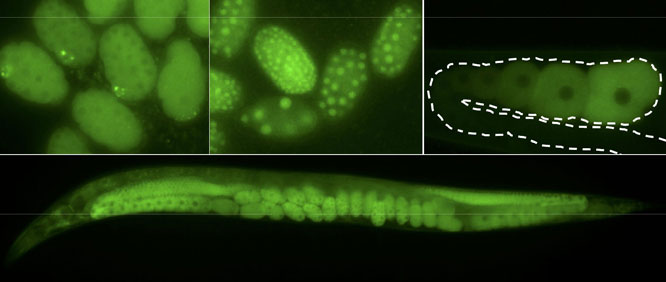A versatile new CRISPR/Cas9 genome editing strategy allows mutation, tagging, and gene deletion in C. elegans without the use of co-integrated markers or long homology arms, report Paix et al. in an article published Early Online in GENETICS. The strategy can be easily scaled up, and should allow systematic construction of precise ORF deletions and reporter fusions for every gene in C. elegans, which has not previously been feasible for an animal model.
The trick? It turns out that homology-directed repair (HDR) of Cas9 cut sites is more robust than thought, occurring at high efficiency regardless of the size of the edit, even with short homology arms of only 30-60 bp. That means PCR fragments or ss oligodeoxynucleotides can be used as donor molecules for large edits, sidestepping the need to construct plasmids with selection markers and homology arms of 1 kb and up.
Using this “micro-homology” approach, the authors developed a single protocol for making clean edits ranging in size from single nucleotides to entire genes, generating homozygous mutants in 10 days. They suggest that a similar approach might also work in other model organisms. For many animal systems, faster and more versatile genome engineering may be just around the corner.
Paix A., H. E. Smith, C.-Y. S. Lee, D. Calidas, T. Lu, J. Smith, H. Schmidt, M. W. Krause & G. Seydoux (2014). Scalable and Versatile Genome Editing Using Linear DNAs with Micro-Homology to Cas9 Sites in Caenorhabditis elegans, Genetics, http://www.genetics.org/content/198/4/1347.full













